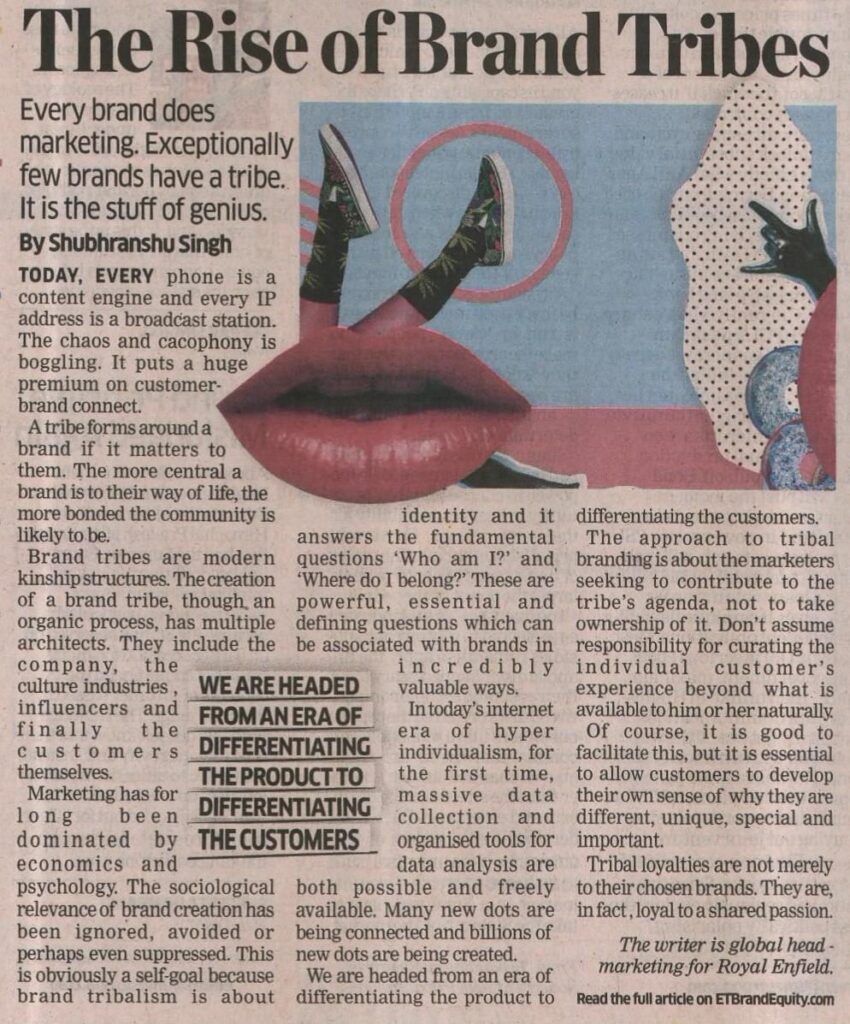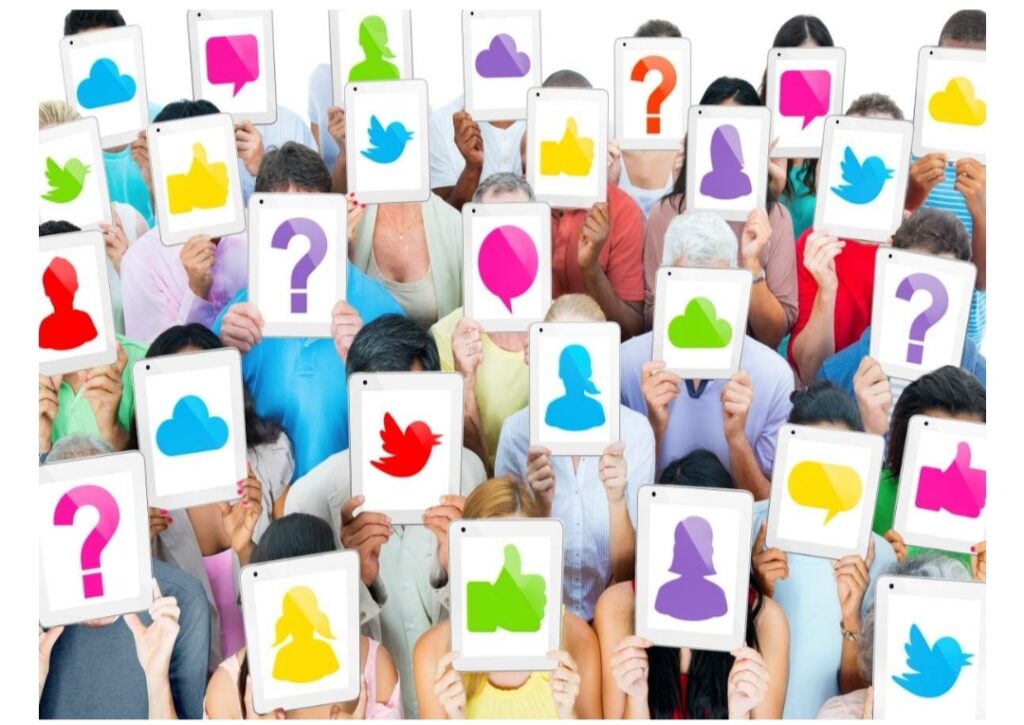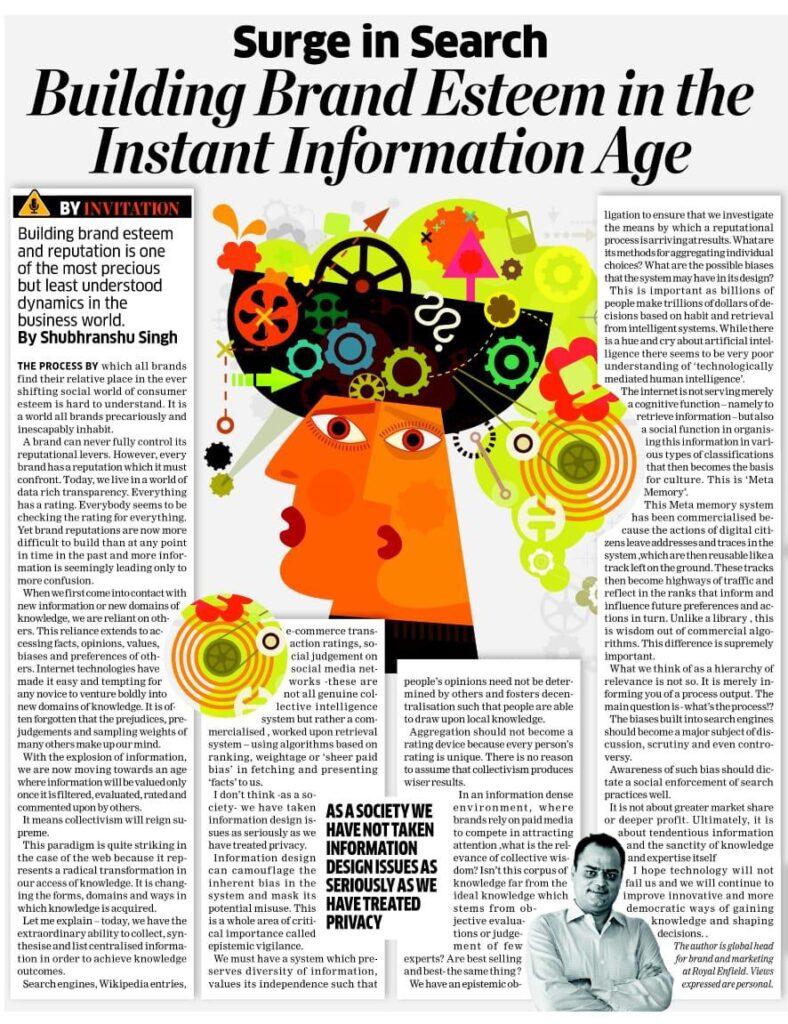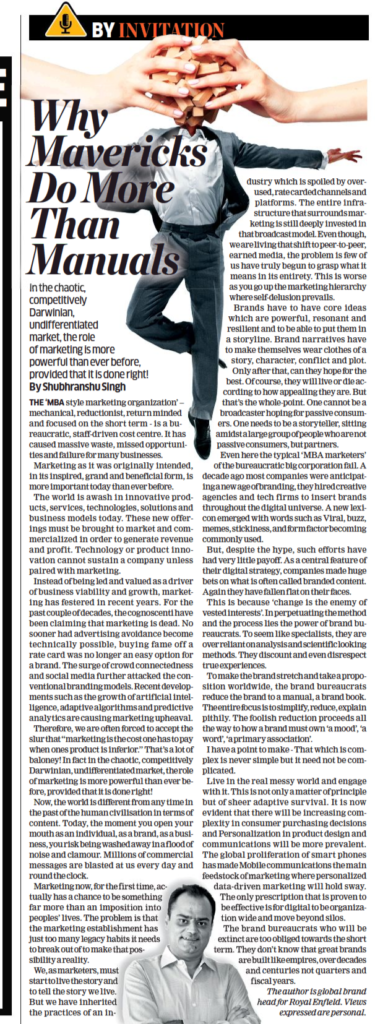Brand reputation in the information age
Super abundant information has made us cognitively challenged. As individuals, institutions, groups, societies and entire nations we are more dependent on external judgments now than ever before, the author writes… Rousseau said “I’d rather be a man of paradoxes than a man of prejudices” but one less recognized paradox is that prejudices play a pivotal role in how we deal with information. A brand is successful when society esteems it. We know that social judgement is a collective construct. The power to shape a brand’s reputation lies in the hands of others. [siteorigin_widget class=”SiteOrigin_Widget_Image_Widget”][/siteorigin_widget] Super abundant information has made us cognitively challenged. As individuals, institutions, groups, societies and entire nations we are more dependent on external judgments now than ever before. We need help to evaluate and make sense of the information with which we are swamped. For thousands of years, our trust operated in a linear way. You trust A who, in turn,trusts B. Therefore, you trusted B even without knowing him. But these chains were brittle when it came to scalability. With the rise of internet-based information networks, there was a fundamental breaking away in our relationship to knowledge. Now, information is valued only when attested by many others. It needs to be rated and graded by several others. Even a pizzeria chases rating. Collective judgement was always a determinant of brand success. Today technology has made it possible for an ‘always on’ collective intelligence to be at work which, though anonymous, is weighty. Intrinsic worth is not enough to warrant a fabulous reputation. Reputational build up is relational, dynamic and externally curated. Others make you who you are. That’s why Einstein is acknowledged as a great scientist, but we probably won’t know the Nobel Prize winner in Physics this year. Fame is not the same thing as social attestation, but -for sure- it is the most recognised and glamorous facet of it in some cases. Amartya Sen, Virat Kohli , Gulzar – each a highly rated achiever – but their respective standing varies greatly where fame at large is concerned. We often mistake being famous with a positive reputation, per se. So, what creates reputation in the positive, confirmatory sense? Where does such judgement emerge from? The British imperialists adopted the Hindi word “Pucca”, literally meaning ‘solid’. Being judged ‘pucca’ meant you belonged to their class, tribe, mentality and interest group. But in today’s world, peer-review is overshadowed by the influence of mass media and free individuals. Each one rates as if an expert or guru. We trust others because they are many. In that sense, reputation is, always, a meta construct. What we call reputation is, in fact, ‘a reputation of reputations’. Think about it, – a lot of what we dislike, adore or revere is based on second hand and unverified evidence, if any. This socially sanctioned belief system is manipulated by devious advertising, ‘fake news’ and other potentially misinforming sources – and may result in a breakdown of trust. If you want to probe deeply, don’t bother with evidence alone. Don’t see merely what is being said but also who is saying it, why and when. Such vigilance is in your individual interest just as its crucial for ensuring correct valuations, functioning of knowledge-based markets, development of robust institutions and surviving as a viable democracy. In an era of unlimited transmission of information and diffusion of sources it is senseless, if not impossible, to independently research the truth for ourselves. But if we keep our eyes on the interested network behind the content, we may manage to rank it, grade it and label it. In the theory of knowledge, it would be termed a second-order epistemology. Understanding how society esteems a reputation needs a traversing across sociology, psychology, marketing economics and information structures. Often, the reputation building is institutionalised. The Academy Awards, the Nobel Prize, The Padma Awards – we accept the institutional judgement and celebrate it. A great example of personally disinterested collectivism is Wikipedia. However, the rise of tech enabled voices means that institutional rules have come under question. Collective wisdom is an accretive judgement. Beyond a threshold of group size, it is not deliberative but cumulative. Gossip often plays a role in origination and confirmation. “Had every Athenian citizen been a Socrates, every Athenian assembly would still have been a mob” James Madison has wisely observed. Many minds can be wiser than one but just being numerous is no guarantee of superior output. Democratic deliberation must make full use of diversity inputs and remain unbiased to one sense of rationality. As a consumer, be sceptical. As a brand owner, be transparent. As a society, be vigilant. Never forget, your reputation precedes you! https://brandequity.economictimes.indiatimes.com/news/marketing/brand-reputation-in-the-information-age/88306921










